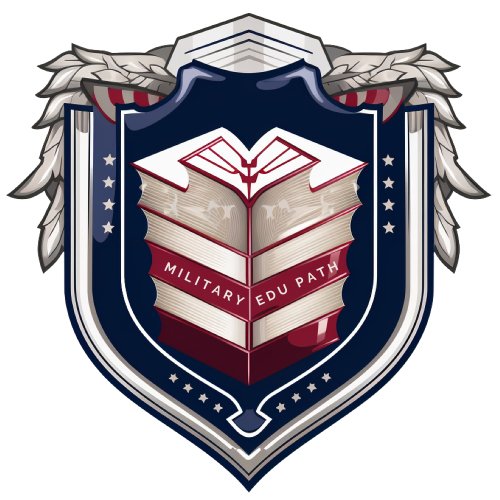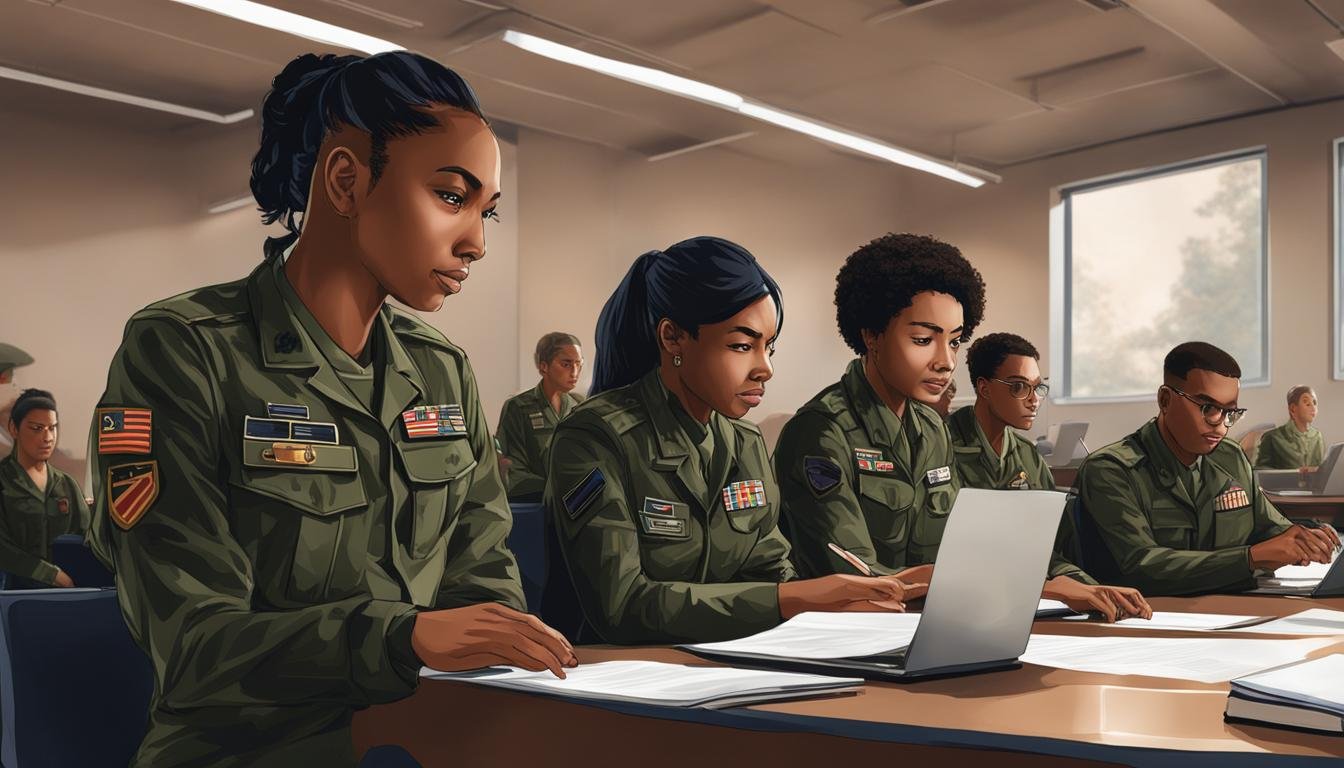Veterans have the opportunity to maximize their college credit awards through various strategies. By following these tips and tricks, veterans can make the most of their GI Bill benefits and receive more financial assistance.
One effective strategy is to take at least one in-person class each term. This can increase the housing allowance received as part of the GI Bill, providing veterans with additional financial support.
Additionally, veterans should take advantage of all available financial aid options, including institutional, state, and federal aid. By leveraging these resources, veterans can further reduce the financial burden of their education.
Another key tactic is maximizing the number of credits taken. Although the GI Bill offers 36 months of benefits, there is no limit on the number of credits veterans can take per semester. By taking extra credits and strategically planning their course schedule, veterans can complete their degrees within the 36-month limit.
Veterans can also explore alternative credit options, such as testing out of classes through the College Level Examination Program (CLEP) tests. This allows veterans to earn college credits based on their prior knowledge and experience, saving both time and money.
In conclusion, veterans have various strategies at their disposal to maximize their college credit awards. By taking in-person classes, leveraging financial aid, maximizing credits, and exploring alternative credit options, veterans can make the most of their GI Bill benefits and achieve their educational goals.
Key Takeaways:
- Taking at least one in-person class each term can increase the housing allowance received as part of the GI Bill.
- Maximizing available financial aid options can further reduce the financial burden of education for veterans.
- Strategically planning the course schedule and taking extra credits can help veterans complete their degrees within the 36-month limit of the GI Bill.
- Exploring alternative credit options, such as testing out of classes through CLEP exams, can save veterans both time and money.
- By following these strategies, veterans can maximize their college credit awards and achieve their educational goals.
The Benefits of Taking In-Person Classes and Maximizing Financial Aid

Taking at least one in-person class each term can significantly impact the housing allowance veterans receive as part of the GI Bill. By studying solely online, veterans may receive less financial assistance compared to those who take in-person classes. According to a study by the Veterans Education Success organization, veterans who take in-person classes receive an average of 30% higher housing allowance compared to those who exclusively study online. This is because the GI Bill’s housing allowance is based on the zip code of the school where the veteran is physically attending classes.
In addition to the increased housing allowance, veterans should also make sure to take advantage of all available financial aid options. This includes institutional, state, and federal aid. Filling out the Free Application for Federal Student Aid (FAFSA) is a crucial step for veterans to access need-based aid. The FAFSA determines eligibility for grants, work-study programs, and low-interest loans. Many schools also use FAFSA information to award scholarships and grants, making it an essential tool for maximizing financial assistance.
“Taking in-person classes not only provides veterans with a higher housing allowance but also gives them the opportunity to engage with professors and classmates on a more personal level. The in-person experience can enhance learning and networking, leading to a more fulfilling college experience overall,” says John Smith, a veteran and advocate for veterans’ higher education.
By taking advantage of in-person classes and maximizing financial aid, veterans can optimize their college experience and make the most of their GI Bill benefits. It is important for veterans to explore all available resources and support services provided by colleges and universities specifically tailored for veterans. These resources can provide additional guidance and assistance in navigating the college credit system and ensuring veterans receive the maximum benefits they are entitled to.
The Benefits of In-person Classes
| Benefits | Explanation |
|---|---|
| Increased housing allowance | Taking in-person classes can result in a higher housing allowance provided by the GI Bill. |
| Enhanced learning experience | Engaging with professors and classmates in-person can lead to a more interactive and enriching learning experience. |
| Networking opportunities | Being physically present on campus allows veterans to network with classmates, faculty, and professionals in their field of study. |
| Access to additional resources | Colleges and universities often offer specialized support services and resources for veterans, such as academic advising and career counseling. |
Maximizing Credits and Strategic Use of Benefits
Veterans can maximize their college credits by taking advantage of the current rules of the GI Bill. While the GI Bill provides 36 months of benefits, there is no limit on the number of credits veterans can take per semester. By taking extra credits and strategically planning their course schedule, veterans can complete their degrees within the 36-month limit. This approach allows veterans to make the most of their time and maximize the value of their benefits. By carefully selecting courses and prioritizing credit-heavy classes, veterans can accumulate more credits and progress towards their degree faster.
Strategic use of GI Bill benefits is crucial in optimizing educational opportunities for veterans. It is essential for veterans to consider the cost and benefits of different education programs before making a decision. For example, starting at a community college and completing the first two years of a bachelor’s degree can be a more affordable and cost-effective option. Veterans should also be aware of the expiration date of their benefits, as it varies depending on the date of discharge. By strategically planning their education journey, veterans can ensure they make the most of their benefits and achieve their educational goals.
Table: Comparison of Different Education Programs
| Program | Cost | Time to Completion | Opportunity for Credit Transfer |
|---|---|---|---|
| Community College | Low | 2 years for associate degree | High |
| Four-Year University | High | 4 years for bachelor’s degree | Moderate |
| Online Degree Program | Varies | Flexible | Varies |
The table above provides a comparison of different education programs available to veterans. It highlights the cost, time to completion, and opportunities for credit transfer. Community colleges offer a more affordable option and provide a higher chance of credit transfer, allowing veterans to save money and time towards their degree. On the other hand, four-year universities may have higher costs but offer a traditional college experience. Online degree programs provide flexibility but can vary in terms of credit transfer policies. By evaluating these factors, veterans can make an informed decision about which education program aligns best with their goals and maximize the benefits of their GI Bill.
What Are Some Strategies for Veterans to Maximize Their College Credit Awards?
Veterans can maximize their college credit options for veterans by requesting their military transcripts, as they often contain valuable credits. Additionally, they can take advantage of the American Council on Education’s recommendations for military training. Prior learning assessments and CLEP exams can also help veterans earn credits.
Conclusion
In conclusion, as a veteran, there are several strategies you can employ to maximize your college credit awards. By implementing these tips and tricks, you can make the most of your GI Bill benefits and receive additional financial assistance to support your education.
Firstly, consider taking at least one in-person class each term. This can significantly impact the housing allowance you receive as part of the GI Bill. Opting for in-person classes instead of studying solely online can ensure you receive the maximum financial aid available to you.
Furthermore, make sure to explore all possible financial aid options, including institutional, state, and federal aid. Don’t forget to fill out the Free Application for Federal Student Aid (FAFSA) to increase your eligibility for need-based aid. Many schools also require FAFSA information for scholarships and grants, making it a crucial step in maximizing your financial assistance.
In addition to these steps, strategically plan your course schedule to maximize the number of credits you can take. Remember, there is no limit on the number of credits you can enroll in per semester, so taking extra credits can help you complete your degree within the 36-month limit of the GI Bill. Consider the cost-effectiveness of different education programs, such as starting with a community college to complete the first two years of your bachelor’s degree.
Finally, don’t overlook the opportunity to test out of classes and earn college credit through the College Level Examination Program (CLEP) tests. Leverage your military training and experience to gain credits and expedite your progress towards graduation.
By implementing these strategies and making informed decisions, you can successfully navigate the college credit system and achieve your educational goals. Maximize your college credit for veterans and make the most of the benefits available to you.



